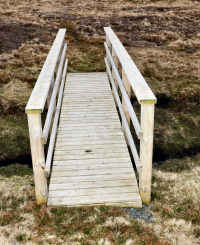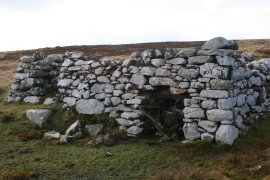

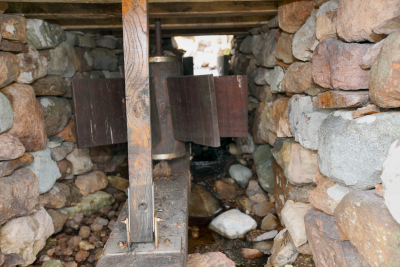
Above: What remained of the mill prior to reconstruction
Below: On of the wooden Brigs built to allow easier access to the mill.
The Sjopiltie Story;
Sjopiltie was the local name for a kind of water kelpie who appeared from a funnel hole in the rocks at the Cletts beyond the Hoop. Sjolpiltie normally appeared before bad weather and was accompanied with a blue flame. Sometimes he appeared in the form of a horse as in this story.
The story goes that one dark winter night an old man from the croft of London near Tangwick took a kishie of grain to grind at this mill. When he emerged from the mill it was moonlight and he saw a small black horse standing by the wall. As it seemed quite tame, and as he was tired because it was late at night, he thought he would get on the horses back and get some help in carrying his burden home. They started uphill but the horse would not go towards the gate but set off to the westward towards the sea. He struggled in vain to control the horse and, finally realising that this must be Sjopiltie, he flung himself and his kishie off just before Sjopiltie disappeared down a hole in the rocks in a blue streak of flame. This hole in the rocks is known locally as Sjolpiltie's Hol.
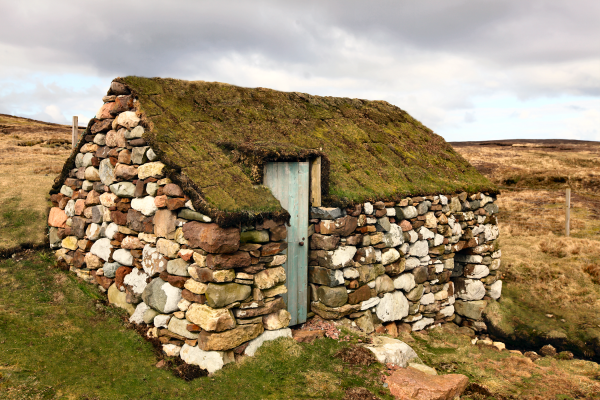
The Watermill at Tangwick, Eshaness. Restored by HEARD.
This was a very interesting mill to restore, it was originally built in 1829, and is situated a short distance from the Tangwick Haa Museum. It also has a link in folklore with the Sjopiltie or water horse, who if someone climbed on his back ran into the water and the poor rider was never seen again.
The Mill is a Horizontal Watermill similar to those built in Scandinavia and were common in Shetland in the late 18th and 19th centuries. They went into decline at the beginning of the 20th century, however there was a short revival in some areas during World War One when flour supplies were scarce. They would have been used to grind Shetland Bere (Barley) and Shetland Aets (Oats).
The Mill is constructed of local stone and the roof is covered with poans. The Mill Stones are originals found within the remnants of the mill but must have been brought in from outside the district as they are not made from stone found locally.
The mill would have been used amongst others by Christopher Sandison the school teacher who is mentioned among the Folk fae wir Past. and there is a reference to the Mill in his diary of 1829 about carrying stones and helping Donald Anderson of the Scarff to construct it.
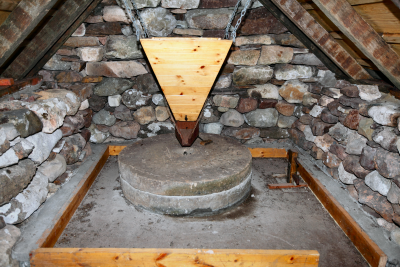
The Mill is open to anyone who wishes to go and see it.
Follow the marker sign posts which start on your right hand side as you reach the boundary fence going in the Tangwick road on your way to the museum.
Restored in 2007/2008 by HEARD with funding from Awards for All, Shetland Enterprise, Northmavine Community Council and Shetland Islands Council's Planning Development Department.
Building Restoration by Shetland Stonecraft. Working parts were by Clive Mouat (Welding). Poans donated by Robert Turcan. Wooden brigs, (Bridges) fence and marker posts were by Willie Doull. (Fencing Contractor).
HEARD would also like to thank all the local folk who gave us assistance in any way to help restore the Mill.
